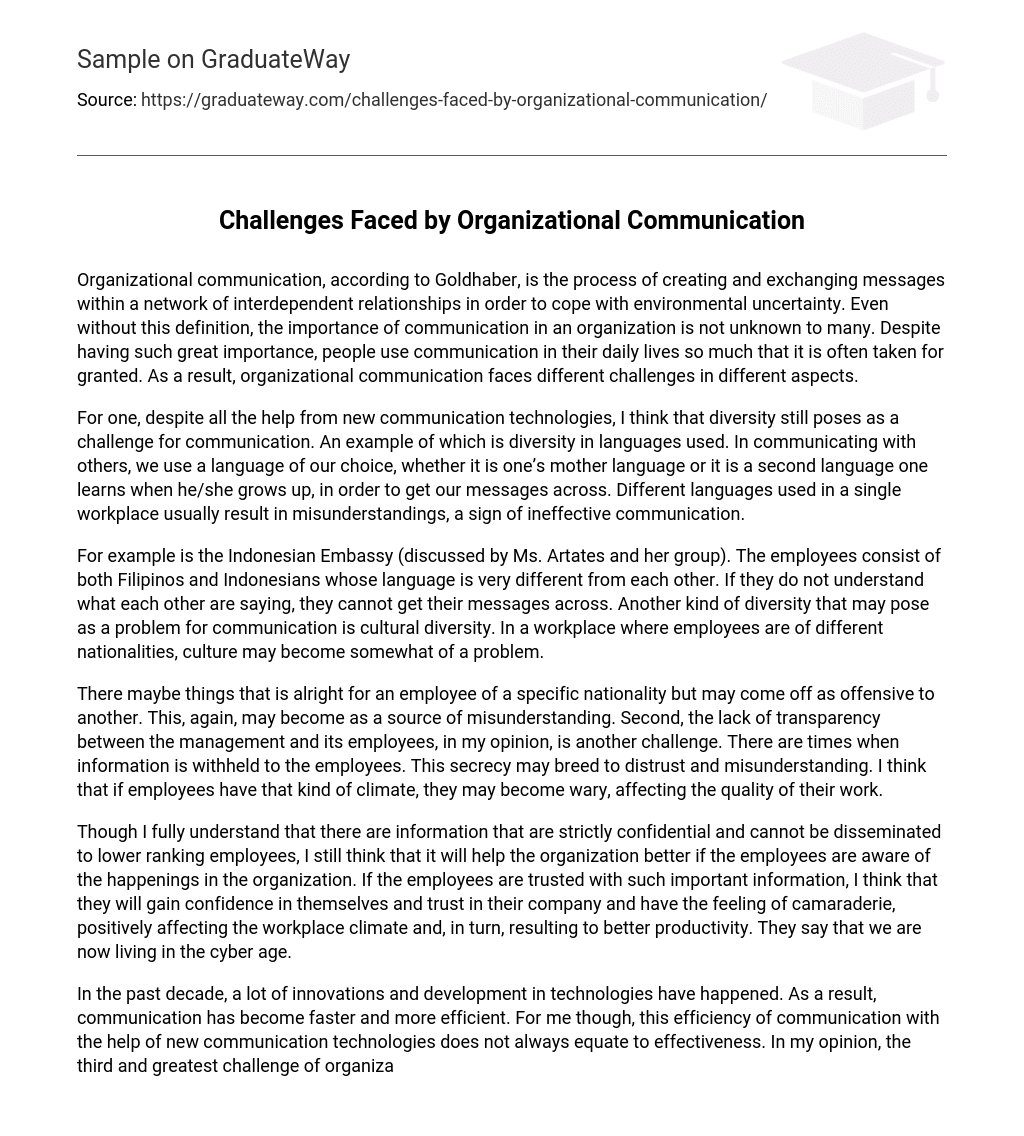According to Goldhaber, organizational communication involves the exchange and creation of messages within a network of relationships to handle uncertainty. While the significance of communication in organizations is widely recognized, its practical implementation often results in neglect. As a result, various challenges are encountered in organizational communication across different domains.
Despite the assistance of new communication technologies, I believe that diversity remains a challenge in communication. This is evident in the diversity of languages used, as individuals choose a language, whether it be their native tongue or a language learned later in life, to convey messages. When multiple languages are spoken in a single workplace, it often leads to misunderstandings and hinders effective communication.
For instance, the Indonesian Embassy (mentioned by Ms. Artates and her group) presents a situation where employees consist of both Filipinos and Indonesians, who speak distinct languages. Failure to understand each other’s language hinders effective communication. Cultural diversity also poses a potential challenge for communication in workplaces with employees of different nationalities, as cultures may clash.
No matter what country they come from, some things may be acceptable to one employee but offensive to another, causing potential misunderstandings. Furthermore, a lack of transparency between management and employees presents another challenge. Occasionally, information is kept secret from employees, promoting distrust and misunderstanding. If employees feel suspicious in this kind of environment, it can have a negative effect on the quality of their work.
While acknowledging the presence of confidential information that cannot be shared with lower-level employees, I strongly advocate for keeping the workforce informed about company-related matters. Sharing such crucial information with employees can boost their self-assurance and trust in themselves and the company. Consequently, this promotes unity and fosters a positive workplace atmosphere, ultimately resulting in higher productivity. It is frequently emphasized that we are currently living in a technology-driven era.
In the past decade, numerous technological innovations and advancements have revolutionized communication, leading to quicker and more efficient methods. Nevertheless, I believe that this enhanced efficiency doesn’t always guarantee effective communication. In my view, the major hurdle in organizational communication lies in keeping up with the rapidly evolving technology. Just as we become accustomed to new technologies, they are already undergoing further upgrades and enhancements.
While the process is constantly evolving, its objective remains unchanged. The requirement to adjust in order to prevent organizational failure stems from the rapid obsolescence of technologies. Nevertheless, technological progress enables remote communication and collaboration, ultimately resulting in time and cost savings. Despite these benefits, I believe that the human aspect is often disregarded. In my opinion, face-to-face meetings with team members contribute to improved decision-making.
The challenges faced by organizational communication in the Philippines can be attributed to our human nature rather than being robots. As social creatures, we thrive when we have opportunities for real interaction. These challenges consist of diversity, lack of transparency, and technological changes. It is my firm belief that acknowledging our interdependence as humans and demonstrating mutual respect can enhance and optimize communication within an organization.





